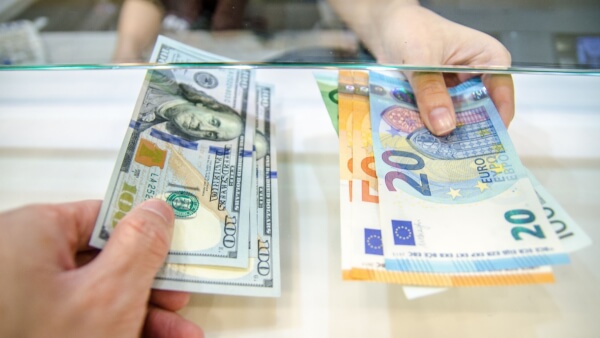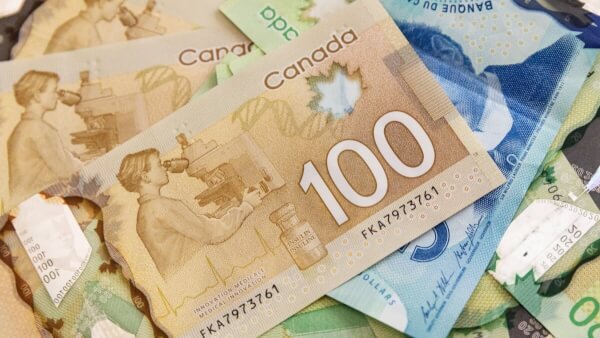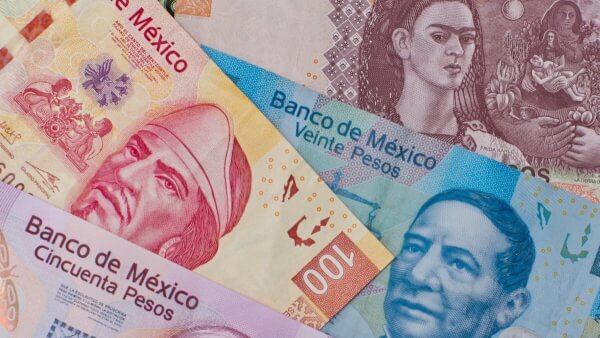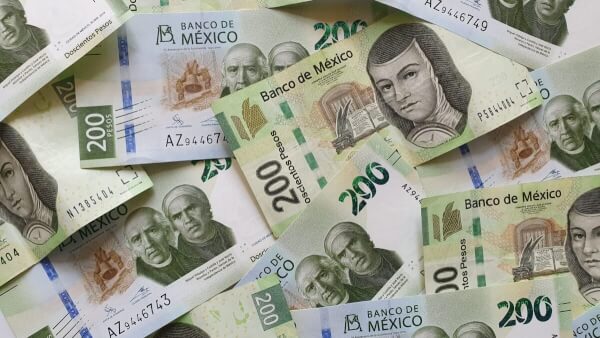What is the best place to exchange currency?
Going abroad and in need of foreign currency? In this article, we'll explore where to exchange currency - from good deals to the places you should avoid.

Whenever a merchant or ATM asks you which currency to charge you in, there's only one right answer… the local currency wherever you are.
In Mexico, that’s pesos. In Canada, Canadian dollars. In the Eurozone, choose to pay in euros. In Britain, pounds. In Australia, AUD. You get the idea. Always, always, always choose to be charged in the local currency of the country you're in.
Let’s say you’re on vacation in Mexico and a message on an ATM flashes up asking if you want to be charged in USD. Say no. Don't let the machine do your currency conversion. Why? Keep reading to find out all you need to know about keeping down costs at ATMs globally.
Foreign ATMs and card machines might flash up a message along the lines of: This ATM offers conversion to your home currency.
On the surface, that seems pretty harmless. You'll be able to see exactly what you're paying in USD, without needing to do any math or any conversion calculations.
Unfortunately, it’s not that simple. If you allow the ATM to do the currency conversion you’ll be caught out by a common pitfall experienced by travelers the world over: Dynamic Currency Conversion (DCC).
DCC is sold as a service to travelers as it removes the need to convert currency in your head to work out what you’ve paid in dollars. Instead, the ATM or point of sale machine will tell you neatly what you’ve spent.
However, it’s not that simple - and DCC usually means you’ll pay more. That’s because DCC means the foreign ATM provider or bank will set an exchange rate for your transaction. And this is likely to include a markup or extra fees, meaning you pay more in the end compared to letting your own card do the currency conversion for you as would otherwise happen.
If you’re asked whether you’d prefer to pay in dollars, the best answer to give is no. That way you’ll get the network or card provider’s exchange rate - which will usually be far cheaper than letting the merchant do the exchange for you.
Want an easy solution? Get a Wise Multi-Currency Card. Open a Wise account online or in the Wise app for free, order your card, top up in USD - and then spend as you travel with no worries about DCC. The Wise account supports holding and exchange for 40+ currencies.
If you have the currency you need in your account there’s no fee to spend it. And if you don’t, your card can convert to the currency you need wherever in the world you are, with the mid-market rate and low fees from 0.43% - which means you never need to worry about DCC again.
| Check out these other handy Wise personal account features: |
|---|
|
Please see Terms of Use for your region or visit Wise Fees & Pricing for the most up to date pricing and fee information
In this example, I'm taking out EUR in Barcelona, with a UK card.
I wanted to get 20 EUR from a Spanish ATM owned by Santander bank®, using my HSBC® debit card from the UK (GBP).
The screen says Press Yes for GBP, No for EUR.
| Yes for GBP (converted with DCC) | No for EUR (converted in the local currency) |
|---|---|
The Santander ATM tells me the currency exchange rate is 0.8375, and that I'll be charged 16.75 GBP for my 20.00 EUR . The screen states “Mark-up 2% commission on Santander Wholesale Rate” This is a Santander ATM, and the account I'm using is with HSBC, so this 2% is the extra cost of letting the ATM do my currency conversion for me. | On this occasion I chose to be charged in the local currency - EUR. Later, when I checked my HSBC statement, I'd been charged 16.44GBP. – 2% better than what the ATM quoted for the Santander ATM conversion. |
| Being charged with DCC (choosing my home bank currency): 20.00 EUR = 16.75 GBP | Being charged in the local currency (EUR): 20.00 EUR = 16.44 GBP |
If my bank had actually charged me using the mid-market currency exchange rate (the same rate you'll find on Google®), then at the time my money was worth even more than I realized.
| Mid-market rate | DCC | Difference |
|---|---|---|
| 20 EUR should have cost me 15.79 GBP | 20 EUR = 16.75 GBP | 0.96 GBP (6.1%) |
Again, the theoretical cost of 20 EUR at the mid-market rate (the rate I looked up on Google) was 15.79 GBP.
| Mid-market rate | DCC | Difference |
|---|---|---|
| 20.00 EUR should have cost me 15.79 GBP | 20.00 EUR = 16.44 GBP | 0.65 GBP (4.1%) |
| In this example, choosing my home currency would have pushed the cost of my withdrawal up from 4.1% to 6.1%. Choose to be charged in whatever the local currency is! |
|---|
Now. Let's look at the opposite...
Taking out GBP in London, with an EUR card. I took out 100 GBP from a UK ATM using a EUR card issued by an Estonian bank.
No DCC commission was stated on-screen this time.
| (Forward button) Continue with conversion (DCC) | (Backward button) Continue without conversion (paying in the local currency) |
|---|---|
| All I'm given is a rate of 1.3551 for conversion to my account's 'Home Currency' (in this example, that's EUR). | I chose to be charged in GBP. Which meant I had to do a little extra investigation later. I pulled up my home bank's EUR statement and found that my Estonian bank had given me a present. |
For DCC, the machine tells me I’ll be charged: 135.51 EUR for 100 GBP When I checked on Google, the mid-market rate that day was 1.2601. The amount I should have been charged was: 126.01 EUR for 100 GBP | Being charged in the local currency (no DCC) I was charged: 126.12 EUR for 100 GBP That’s a massive savings of nearly 10 EUR over choosing the DCC option. |
| Mid-market rate | DCC | Difference |
|---|---|---|
| 100 GBP should have cost me 126.01 EUR | 100 GBP = 135.51 EUR | 9.50 EUR (7%) |
| Mid-market rate | DCC | Difference |
|---|---|---|
| 100 GBP should have cost me 126.01 EUR | 100 GBP = 126.12 EUR | 0.11 EUR (0.1%) |
| In this example, choosing my home currency would have pushed the cost of my withdrawal up from 0.1% to 7%. Choose to be charged in whatever the local currency is! |
|---|
Choose GBP when in the UK.
And MXN when in Mexico.
And CAD when in Canada.And EUR when you're in a Eurozone country (you know - Spain, Germany, France, Italy, Ireland, Portugal, the Netherlands, etc.)And AUD when in Australia.And NZD when in New Zealand.
You get the picture.
So there you go. Just always keep that simple rule in mind: choose to be charged in the local currency of the country you're in, and don't let the ATM do your conversion for you. Or even better - get a Wise Multi-Currency Card. You won’t need to worry about DCC, currency conversion uses the mid-market rate, and the fees are low and transparent. Easy.
*Please see terms of use and product availability for your region or visit Wise fees and pricing for the most up to date pricing and fee information.
This publication is provided for general information purposes and does not constitute legal, tax or other professional advice from Wise Payments Limited or its subsidiaries and its affiliates, and it is not intended as a substitute for obtaining advice from a financial advisor or any other professional.
We make no representations, warranties or guarantees, whether expressed or implied, that the content in the publication is accurate, complete or up to date.

Going abroad and in need of foreign currency? In this article, we'll explore where to exchange currency - from good deals to the places you should avoid.

You're all set for your trip abroad, and the question comes up: where can I exchange foreign currency? In this article, we'll go through all the options & tips.

Heading abroad? Here’s everything you need to know about ordering Canadian dollars in the US.

Heading abroad? Here’s everything you need to know about ordering pesos with Chase bank.

Heading abroad? Here’s everything you need to know about ordering pesos with Wells Fargo.

Heading abroad? Here’s everything you need to know about ordering euros with Bank of America.